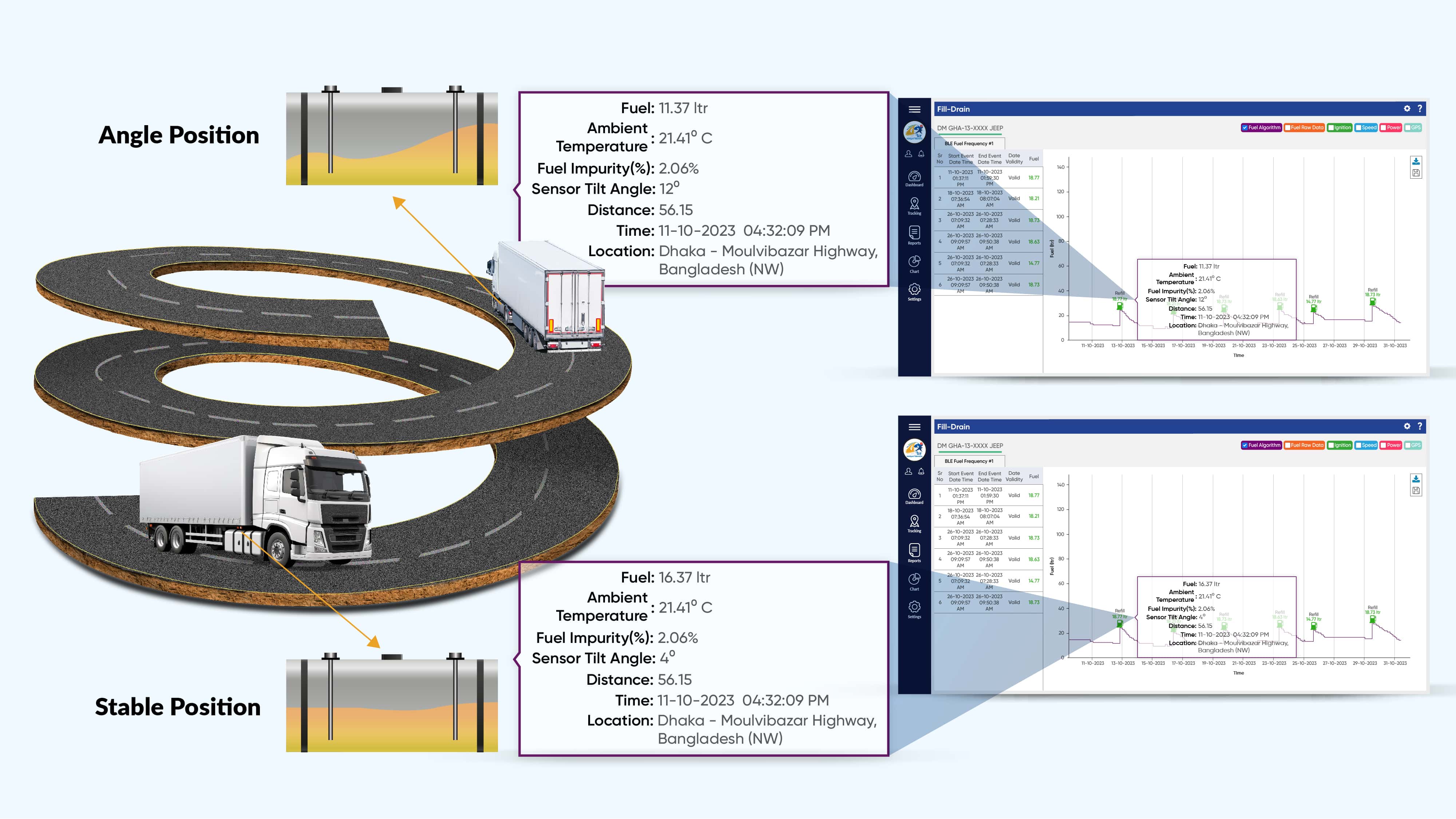In the realm of automotive technology, the accuracy of fuel measurement is paramount for both vehicle efficiency and driver convenience. One integral component that plays a significant role in this accuracy is the fuel level sensor. While many may assume that the sensor's primary function is to gauge the amount of fuel present, the angle at which it operates emerges as a critical factor that directly influences the precision of fuel readings.
⛽Understanding Fuel Level Sensors: Beyond the Basics
Fuel level sensors are tasked with measuring the quantity of fuel within a vehicle's tank, providing real-time data to the onboard computer system. Traditionally, these sensors were designed with a simplistic approach, solely focusing on the depth of fuel. However, modern advancements demand a more nuanced understanding, and this is where the angle of the fuel level sensor comes into play.

💡The Angular Dimension: Why Does It Matter?
Accurate Volume Calculation:
The fuel level sensor's angle is pivotal in ensuring precise volume calculations. As the vehicle moves accelerates, or decelerates, the fuel within the tank experiences changes in orientation. The angle of the sensor helps account for these variations, contributing to accurate volume assessments.
Reducing Measurement Errors:
Without considering the sensor's angle, the risk of measurement errors significantly increases. Sloshing and splashing of fuel during abrupt movements can mislead traditional sensors, leading to inaccurate readings. The angular dimension acts as a stabilizing factor, minimizing the impact of such movements on fuel level calculations.

📈Deciphering the Impact of Fuel Tank Angles on Precision in Fuel Measurement.
Recent strides in technology have ushered in a new era for fuel-level sensors, capitalizing on sophisticated algorithms and sensor fusion techniques. These breakthroughs, when combined with a keen consideration of sensor angles, empower vehicles to attain an unparalleled level of precision in fuel level measurements.
In the pursuit of exact fuel accuracy, the role of the fuel angle becomes indispensable. The calculation of fuel levels is intricately tied to the vehicle's angle, a pivotal factor that ensures the reliability of the data. As the sensor transmits information to the software, it includes the corresponding angle data. Typically, angles within the range of 1-4 degrees are considered normal, and during this range, the fuel data is deemed accurate. However, when the angle exceeds this threshold, for instance, at 10 degrees, skepticism arises regarding the authenticity of the provided data. Therefore, to scrutinize and make sense of the data, the angle is a critical variable in achieving fuel accuracy.

🖥️Technological Advances: Bringing Precision to Fuel Measurement
Sophisticated software solutions are equipped with the capability to analyze data in conjunction with the angle. This advanced technology operates on dynamic algorithms that not only capture the angle but also provide insights into the reasons behind any deviations. It furnishes all the necessary data required to thoroughly assess and ensure the accuracy of fuel measurements.
Achieving precise measurement and analysis of fuel consumption demands the utilization of advanced telematics solutions. Only through these sophisticated systems can essential fuel data be captured and analyzed comprehensively, encompassing parameters transmitted by sensors and devices. Here's an overview of what telematics can provide:
- Angle Parameter: Obtain real-time vehicle angle positions along with location information.
- Fill-Drain Chart: Access fuel values in liters across different time intervals, facilitating the identification of issues such as vehicle jerking through the fill-drain graph.
- Data with Location: Visually represent fill or drain occurrences on a map, allowing users to easily identify and save locations for future reference.
- Fuel Algorithm: Employ a precise algorithm indicating fill-drain points on the graph, accompanied by crucial details such as fuel levels, vehicle and device battery status, temperature, fuel impurity, vehicle angle, distance covered, and time elapsed.
- Fuel Raw Data: Receive real-time fuel data directly from the telematics device.
- Investigate Fuel Data: Scrutinize fuel reports through detailed charts, leveraging critical parameters like vehicle ignition, GPS, power, and speed to verify the authenticity of reported data.
- Mileage-Based Consumption: Optimize fuel usage by gaining insights into Mileage-Based Consumption patterns.
- Prevention of Fuel Pilferage: Safeguard against theft with features designed to prevent fuel pilferage.
- Abnormal Consumption Reports: Stay proactive with real-time reports highlighting abnormal fuel consumption patterns.
- Other Liquid Violation Reports: Monitor and manage various liquids with specialized violation reports.

Conclusion: The Future of Fuel Accuracy
Fundamentally, the synergy between fuel level sensors, advanced software algorithms, and the meticulous consideration of angles marks a groundbreaking paradigm shift in the quest for precision in monitoring fuel levels. Achieving exact accuracy becomes possible through the utilization of dynamic algorithms, and the Bongo IoT Fuel Management System stands out as a comprehensive solution, providing not only precise fuel accuracy but also relevant and valuable data.

Recognizing the critical role played by the fuel angle underscores the importance of selecting the right solution to elevate your business operations. The Bongo IoT Fuel Management System emerges as the ideal choice, equipped with the necessary components to ensure accurate fuel readings while seamlessly integrating the crucial aspect of angle data into its dynamic algorithms. In this way, businesses can optimize their operations with confidence, knowing that they have a reliable and cutting-edge solution at their disposal.
🌐Discover more
Visit at https://www.bongoiot.com/fuel-management
WhatsApp (+88) 01322813551
or,
sales@bongoiot.com

